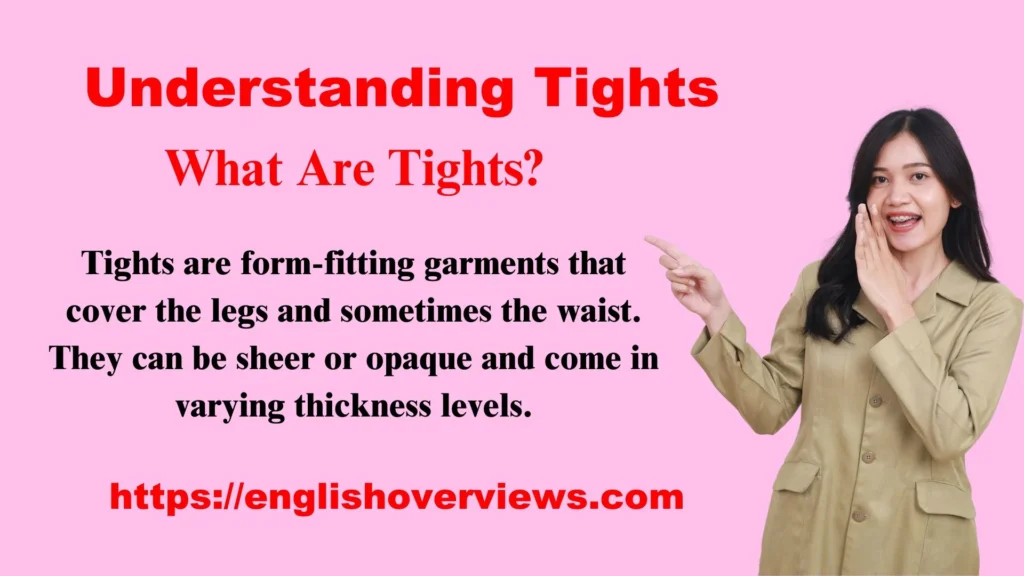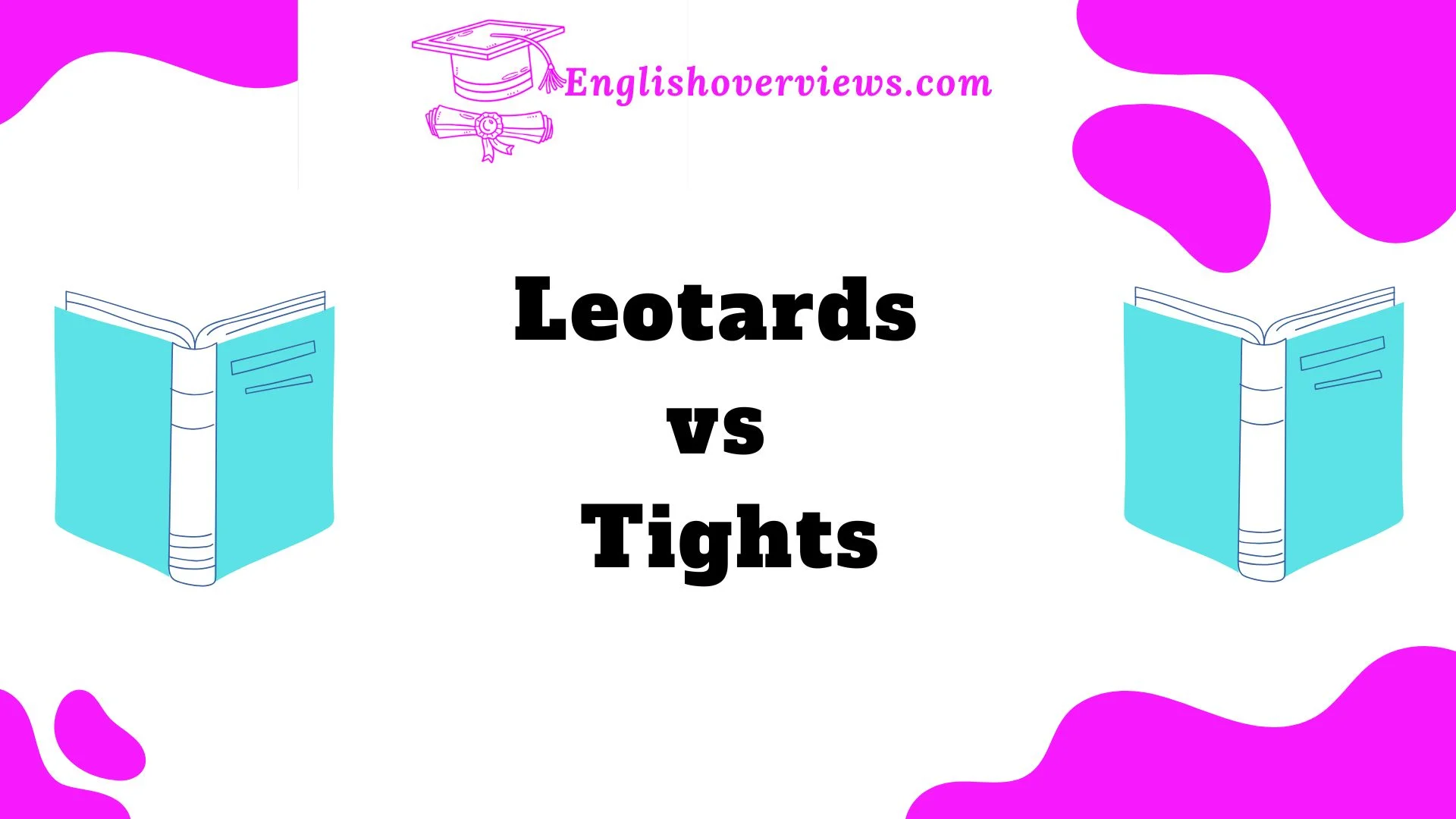When it comes to athletic wear, dance costumes, or performance outfits, the choice between leotards and tights can make all the difference. While both serve essential purposes in sports, performing arts, and even casual fashion, their functions, designs, and benefits vary significantly.
Whether you’re a professional dancer, gymnast, fitness enthusiast, or simply someone who values comfort and style, understanding the key differences between leotards and tights is crucial.
This guide will break down everything you need to know, from materials and flexibility to practical tips for choosing the right garment.
We’ll also explore real-world examples, useful comparison tables, and expert insights to give you a clear understanding of both leotards and tights. So, let’s dive in and settle the debate once and for all!
Understanding Leotards
1.1 What Are Leotards?
A leotard is a one-piece, skin-tight garment that covers the torso and sometimes includes sleeves. It leaves the legs exposed, allowing for maximum flexibility and range of motion.
Key Features of Leotards:
- One-piece design for a snug fit.
- Variety of sleeve lengths: sleeveless, short, long, or three-quarter.
- Different necklines: scoop neck, V-neck, or turtleneck.
- Elastic materials like spandex or Lycra.
Origin Story:
The leotard gets its name from Jules Léotard, a French trapeze artist who popularized it in the 19th century.
1.2 Who Uses Leotards?
Leotards are commonly worn in:
- Gymnastics: For unrestricted movement during flips and routines.
- Ballet and Dance Performances: Providing elegance and flexibility.
- Circus Acts: Tight fits prevent clothing snags.
- Figure Skating: Custom designs for competitive flair.
Example: Olympic gymnast Simone Biles often wears intricately designed leotards that not only serve functional purposes but also add a layer of aesthetic appeal.
1.3 Material and Design
Materials Used in Leotards:
| Material | Benefits |
| Spandex/Lycra | Excellent stretch and recovery. |
| Nylon | Durable and lightweight. |
| Cotton blends | Soft and breathable. |
Design Considerations:
- Seams and Stitching: Designed for durability under pressure.
- Embellishments: Rhinestones, sequins, and unique patterns.
Leotards are crafted to offer both form and function, ensuring wearers feel confident and unrestricted in their movements.
Understanding Tights

2.1 What Are Tights?
Tights are form-fitting garments that cover the legs and sometimes the waist. They can be sheer or opaque and come in varying thickness levels.
Key Features of Tights:
- Full leg coverage.
- Different denier levels: Light (20 denier) to heavy (100 denier).
- Elastic waistbands for a secure fit.
2.2 Who Uses Tights?
Tights are versatile and widely used in:
- Running and Cycling: Compression tights improve circulation.
- Yoga and Fitness Classes: Enhanced flexibility and comfort.
- Performing Arts: Often worn under costumes.
- Fashion: Paired with skirts or dresses for style.
Example: Marathon runners frequently use compression tights to reduce muscle fatigue and improve performance.
2.3 Material and Design
Materials Commonly Used:
| Material | Benefits |
| Nylon | Smooth texture, lightweight. |
| Polyester | Moisture-wicking properties. |
| Elastane | Superior elasticity. |
Design Features:
- Waistbands: High-rise for tummy control.
- Opacity Levels: Sheer for ballet, opaque for athletics.
The material and design of tights focus on comfort, performance, and style, depending on their intended use.
Key Differences Between Leotards and Tights
3.1 Purpose and Functionality
- Leotards: Focused on torso coverage and movement freedom.
- Tights: Focused on leg coverage, compression, and warmth.
3.2 Material and Durability
| Factor | Leotards | Tights |
| Durability | Built for high movement and frequent stretching. | Varies based on denier thickness. |
| Material Stretch | Highly elastic. | Moderately elastic. |
3.3 Design Variations
- Leotards: Come in one-piece bodysuit styles.
- Tights: Designed as separate legwear, sometimes high-waisted.
3.4 Flexibility and Comfort
- Leotards: Best for torso support and full-body flexibility.
- Tights: Ideal for leg compression and muscle support.
Leotards vs. Tights in Sports and Activities

4.1 Sports and Activities Favoring Leotards
- Gymnastics
- Ballet
- Aerial Arts
- Figure Skating
4.2 Sports and Activities Favoring Tights
- Running
- Yoga
- Weightlifting
- Contemporary Dance
4.3 Overlapping Uses
In dance performances, tights are often worn under leotards for a polished look.
Benefits of Leotards and Tights
5.1 Benefits of Leotards:
- Maximum range of motion for physical activities.
- Body alignment visibility for dance and gymnastics.
- Customizable designs for aesthetics.
5.2 Benefits of Tights:
- Compression technology for muscle recovery.
- Temperature regulation during workouts.
- Versatile for multiple sports and casual wear.
How to Choose Between Leotards and Tights
6.1 Activity-Based Guide:
- Dance & Gymnastics: Opt for leotards.
- Running & Yoga: Choose tights.
6.2 Fit and Comfort:
- Ensure the fabric stretches without restricting movement.
- Look for reinforced seams.
6.3 Material Selection:
- Hot climates: Lightweight nylon blends.
- Cold climates: Thicker tights for warmth.
Care and Maintenance Tips
- Hand wash leotards with mild detergent.
- Air dry tights to prevent stretching.
- Store flat to maintain elasticity.
FAQs
1. Can you wear leotards and tights together?
Yes, especially in dance and performance arts.
2. Are tights or leotards better for flexibility?
Leotards offer better torso flexibility, while tights support leg flexibility.
3. How do I prevent tights from tearing?
Choose high-denier tights and handle them carefully.
4. Are leotards suitable for everyday wear?
They can be styled as bodysuits for casual outfits.
5. What’s the difference in material between tights and leotards?
Leotards often use spandex, while tights vary in denier and elasticity.
This guide aims to provide clarity, practical tips, and actionable advice to help you make an informed choice. If you enjoyed this article, share it with your friends or bookmark it for future reference! 😊
Conclusion
Choosing between leotards and tights isn’t just about style-it’s about functionality, comfort, and purpose. Both garments serve unique roles across sports, performing arts, and even everyday fashion.
- Leotards excel in providing torso support, flexibility, and a snug fit, making them ideal for activities like gymnastics, ballet, and figure skating.
- Tights, on the other hand, shine in leg compression, temperature regulation, and versatility, making them a top choice for running, yoga, and dance practice.
When deciding between the two, consider your activity, material preference, and comfort level. Whether you’re a professional athlete, a dancer, or simply someone looking for stylish activewear, the right choice can enhance performance and confidence.
In the end, both leotards and tights have their place in every wardrobe. Understanding their strengths will ensure you make the right investment for your needs-and look great while doing it!

English Overviews is a resourceful website dedicated to providing valuable content related to grammar and vocabulary. AD has made notable contributions, sharing insights on various subjects, including WordPress themes and plugins. The primary goal of the site is to help users improve their English language skills effectively.











